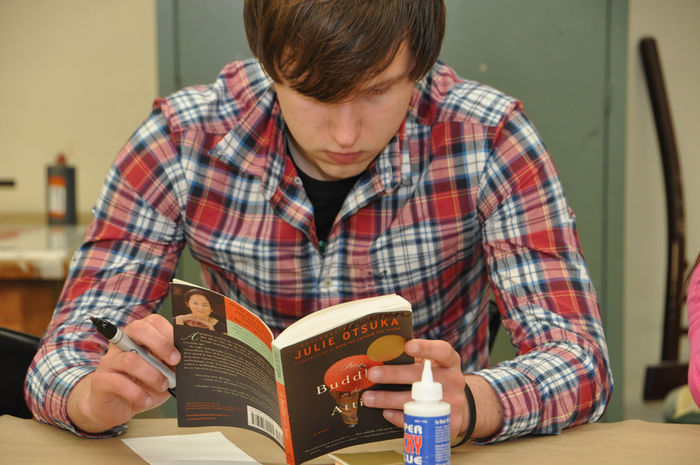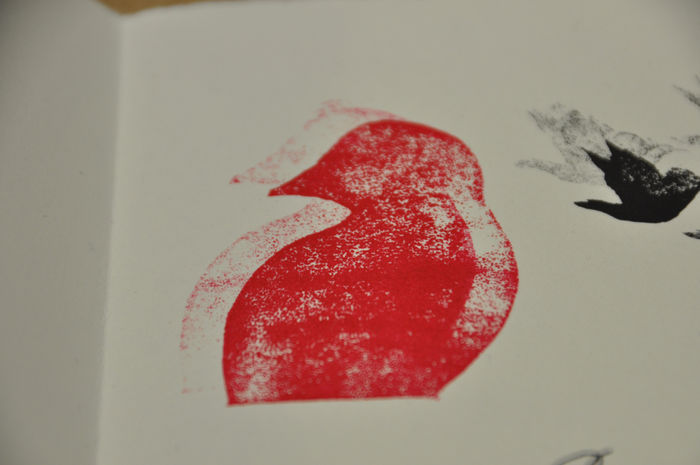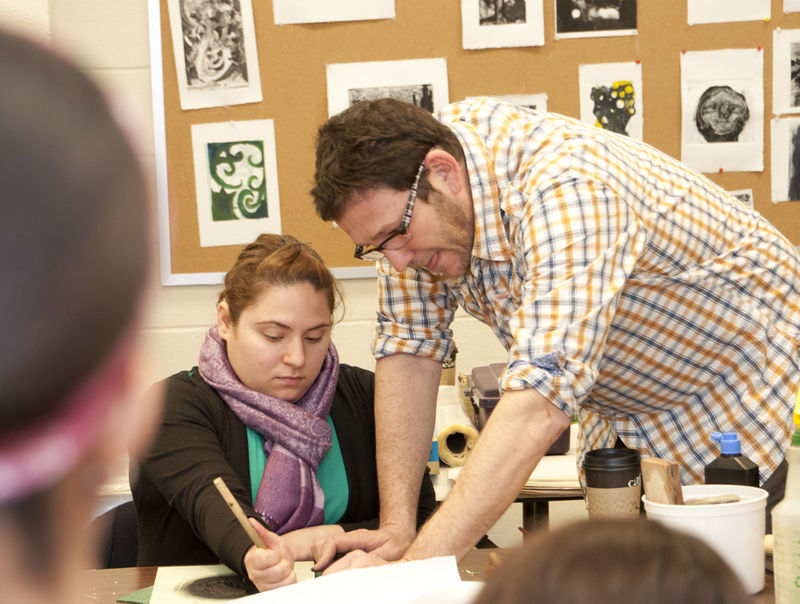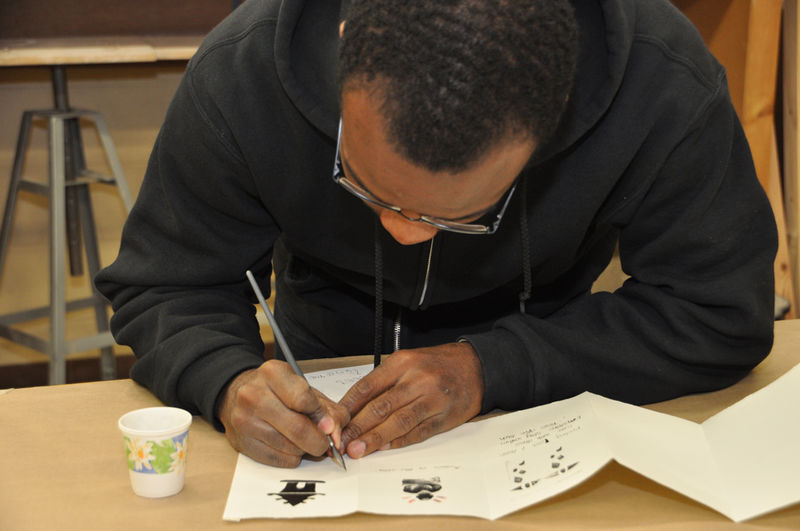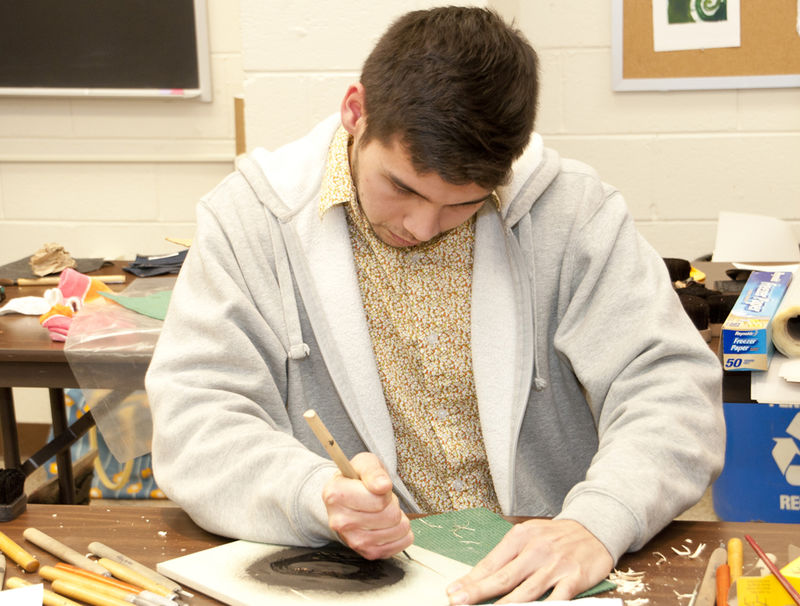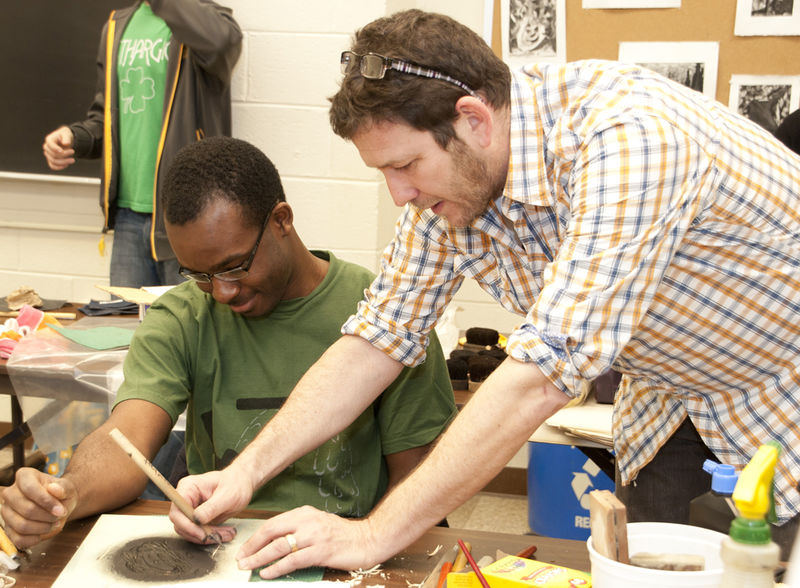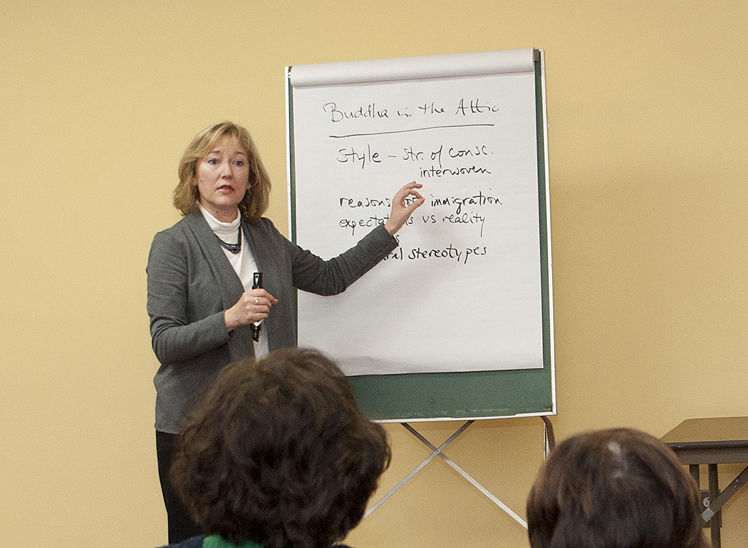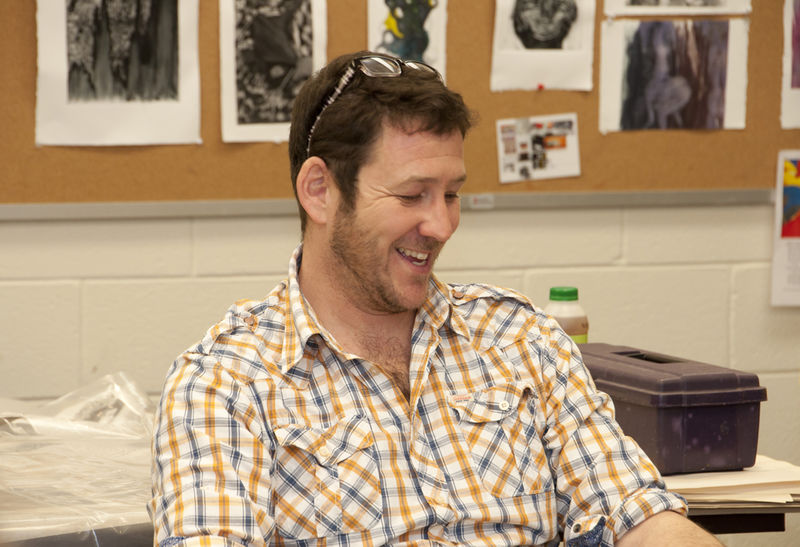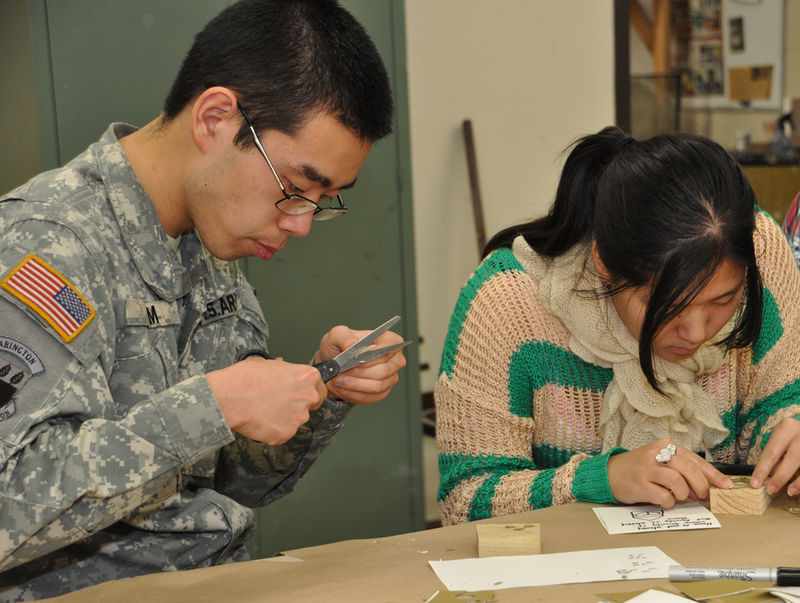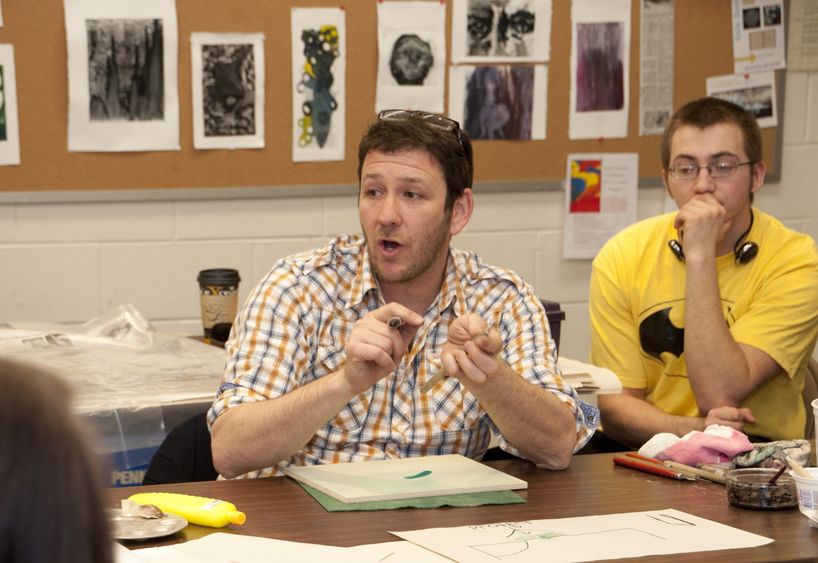
Nationally recognized painter and printmaker Daniel Heyman teaches students the art of traditional Japanese woodblock printing in a private lecture as part of Penn State Abington's "The Buddha in the Attic" exploration series of events.
Julie Otsuka’s book "The Buddha in the Attic" provided the perfect jumping-off point for students, faculty and staff of Penn State Abington, along with the larger Abington community, to engage in in-depth analysis of the penetrating emotions of prejudice, alienation and stigmatization of Japanese “picture brides”—a topic central to the book. These campus-wide events are designed to coincide with One Book One Philadelphia, the annual city-wide event that selected Otsuka’s book for this year’s program.
Each year, the One Book One Philadelphia program provides an opportunity to gain a deeper understanding of issues presented in the chosen book through a variety of public events offered at venues in and around the city. But this year, Penn State Abington decided to take the experience to another level. By examining the themes from Otsuka’s book in various formats—including lectures, discussions, studies and hands-on experiences—participants were exposed to multiple perspectives in a myriad of environments.
“Not only does this approach deepen the students' understanding of the topic but it engages students so that the other material that is built around the topic is learned in a more connective way,” said Yvonne Love, senior lecturer in Art.
As a result, faculty have integrated the book into course work and explored it from diverse perspectives including Art, Women’s Studies, Gender Studies, Asian-American Literature, Japanese cultural studies, history of immigration in the US, cultural and racial prejudice, and social alienation and stigmatization. And while the city’s events will draw to a close in the next few weeks, Penn State Abington will continue to examine the subject throughout the semester in ways both familiar and unconventional.
In an event organized by Love entitled, “alieNation,” participants were challenged to consider aspects of alienation and isolation, either reflected by the characters in Otsuka’s book or in their own lives.
After hearing a brief talk from Michael Bernstein, assistant professor of Psychology, participants were invited to create a single, block-print panel reflecting their own thoughts on and reactions to the subject. The individual panels will be assembled into a Japanese accordion-style bound book. The compiled work is symbolic of the diverse community in which we live and the complexity of our individual reactions to deep feelings of alienation and isolation. The bound book will be displayed on campus throughout the semester.
In a recent panel discussion of “lightning lectures,” several faculty members provided context and background for Otsuka’s book. Pierce Salguero, assistant professor of Asian History, offered a brief history of Japan in the late 19th and early 20th centuries, while Assistant Professor of History Friederike Baer described conditions of immigration in early 20th century America. Additionally, Associate Professor of English Karen Weekes discussed the role of Otsuka’s book in contemporary American fiction and an explanation of how the book represents the Asian-America experience today was offered by Kathryn Hemmann, a University of Pennsylvania doctoral candidate in contemporary literature, cinema, and new media. Later that day, Hemmann visited classrooms to offer a more detailed perspective of this experience to students in a more intimate setting. Dr. Weekes also led two book discussions, one on campus, and the other at the Abington Free Library, extending the discussion to the public.
In another event, Daniel Heyman, a nationally recognized painter and printmaker, exposed students to the art of traditional Japanese woodblock printing in a private lecture and demonstration with art students. The artist brought the craft to life by teaching the students the various steps in the process and then allowing them to create their own works. In a 2007 interview, Heyman said, "Part of your job as an artist is to be a witness for your times. I feel a huge responsibility to get the story out." And for the students in this class, Otuska’s book inspired their own stories and reflections which were revealed, appropriately, using this ancient art form.
"Part of your job as an artist is to be a witness for your times. I feel a huge responsibility to get the story out."
Summarizing the depth of the entire semester-long experience, Dr. Salguero said, “Participating in the One Book One Philadelphia program gives our campus the opportunity to engage with Julie Otsuka's book in a variety of different ways. Featuring academic discussions, community outreach, and personal artistic expression, our exploration of the book brings together the diverse voices of our students, staff, faculty, and neighbors in a common experience that enriches us all.”
And the experience goes on. Faculty members will continue to incorporate content from the book into course curriculum throughout the semester. Artist Daniel Heyman returns to campus for another in-class session with the students and a campus-wide lecture on March 11. And then, on March 14, the author herself, Julie Otsuka, will come to campus for a discussion and book signing for students, faculty and staff.
